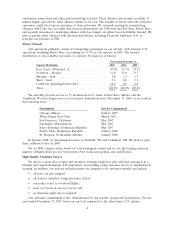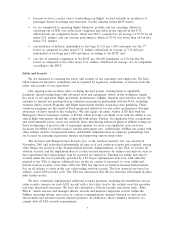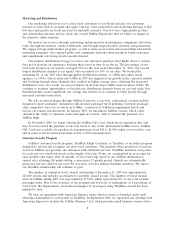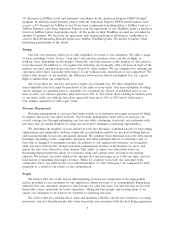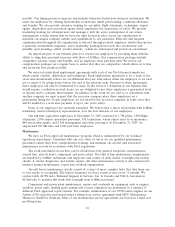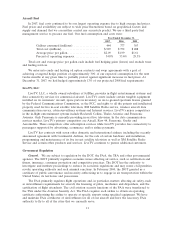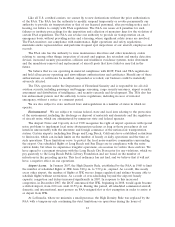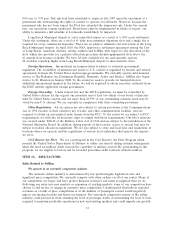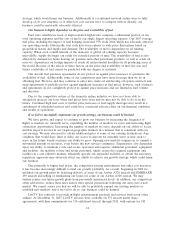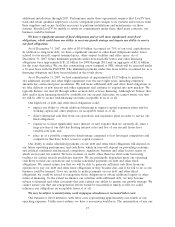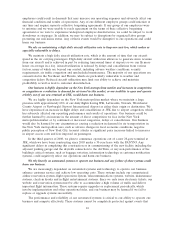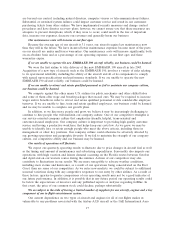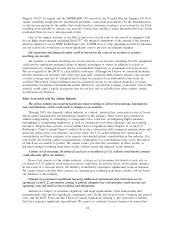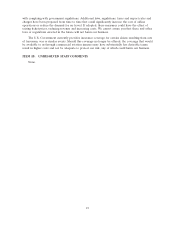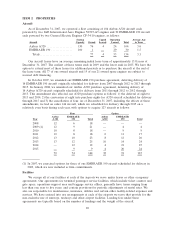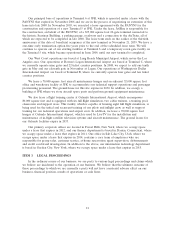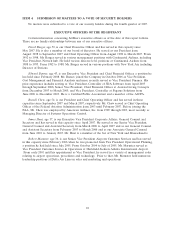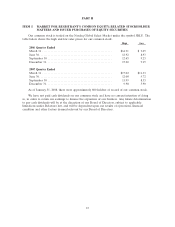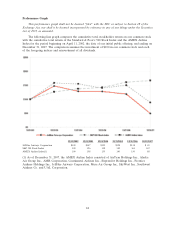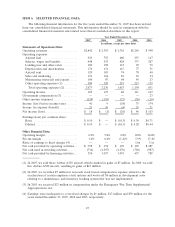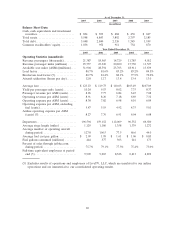JetBlue Airlines 2007 Annual Report Download - page 26
Download and view the complete annual report
Please find page 26 of the 2007 JetBlue Airlines annual report below. You can navigate through the pages in the report by either clicking on the pages listed below, or by using the keyword search tool below to find specific information within the annual report.employees could result in demands that may increase our operating expenses and adversely affect our
financial condition and results of operations. Any of our different employee groups could unionize at
any time and require separate collective bargaining agreements. If any group of our employees were
to unionize and we were unable to reach agreement on the terms of their collective bargaining
agreement or we were to experience widespread employee dissatisfaction, we could be subject to work
slowdowns or stoppages. In addition, we may be subject to disruptions by organized labor groups
protesting our non-union status. Any of these events would be disruptive to our operations and could
harm our business.
We rely on maintaining a high daily aircraft utilization rate to keep our costs low, which makes us
especially vulnerable to delays.
We maintain a high daily aircraft utilization rate, which is the amount of time that our aircraft
spend in the air carrying passengers. High daily aircraft utilization allows us to generate more revenue
from our aircraft and is achieved in part by reducing turnaround times at airports so we can fly more
hours on average in a day. Aircraft utilization is reduced by delays and cancellations from various
factors, many of which are beyond our control, including adverse weather conditions, security
requirements, air traffic congestion and unscheduled maintenance. The majority of our operations are
concentrated in the Northeast and Florida, which are particularly vulnerable to weather and
congestion delays. Reduced aircraft utilization may limit our ability to achieve and maintain
profitability as well as lead to customer dissatisfaction.
Our business is highly dependent on the New York metropolitan market and increases in competition
or congestion or a reduction in demand for air travel in this market, or our inability to open and operate
reliably out of our new terminal at JFK, would harm our business.
We are highly dependent on the New York metropolitan market where we maintain a large
presence with approximately 66%of our daily flights having JFK, LaGuardia, Newark, Westchester
County Airport or Newburgh’s Stewart International Airport as either their origin or destination. We
have experienced an increase in flight delays and cancellations at JFK due to airport congestion, which
has adversely affected our operating performance and results of operations. Our business could be
further harmed by an increase in the amount of direct competition we face in the New York
metropolitan market or by continued or increased congestion, delays or cancellations. Our business
would also be harmed by any circumstances causing a reduction in demand for air transportation in
the New York metropolitan area, such as adverse changes in local economic conditions, negative
public perception of New York City, terrorist attacks or significant price increases linked to increases
in airport access costs and fees imposed on passengers.
In the third quarter of 2008, we plan to commence operations out of a new 26-gate terminal at
JFK, which we have been constructing since 2005 under a 30-year lease with the PANYNJ. Any
significant delays in completing this construction or in commissioning of the new facility, including the
adjacent parking garage and the skywalk connection to the AirTrain, or any non-performance of the
building’s critical systems, such as baggage sortation, information technology or customer notification
systems, could negatively affect our operations and harm our business.
We rely heavily on automated systems to operate our business and any failure of these systems could
harm our business.
We are increasingly dependent on automated systems and technology to operate our business,
enhance customer service and achieve low operating costs. These systems include our computerized
airline reservation system, flight operations system, telecommunications systems, website, maintenance
systems, check-in kiosks and in-flight entertainment systems. Since we only issue electronic tickets, our
website and reservation system must be able to accommodate a high volume of traffic and deliver
important flight information. These systems require upgrades or replacement periodically, which
involve implementation and other operational risks, and our business may be harmed if we fail to
replace or upgrade systems successfully.
The performance and reliability of our automated systems is critical to our ability to operate our
business and compete effectively. These systems cannot be completely protected against events that
16


